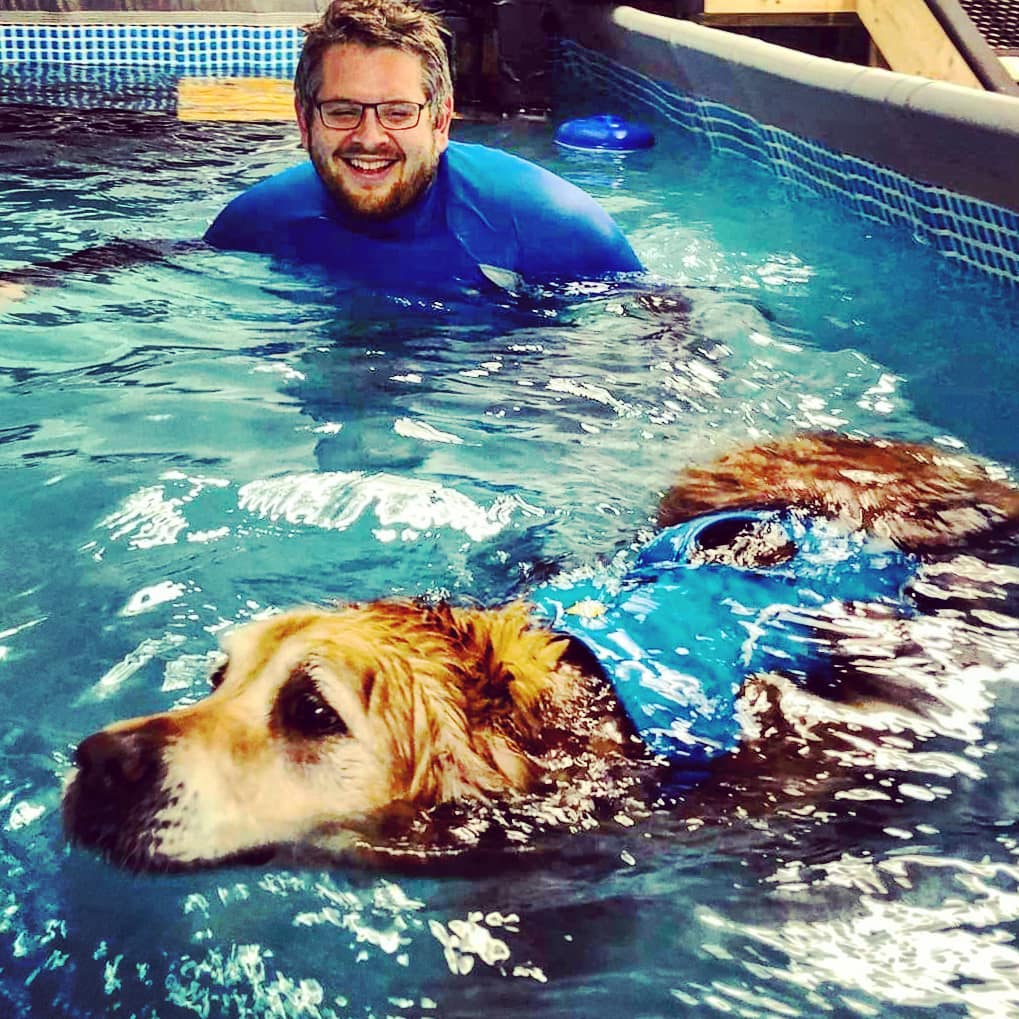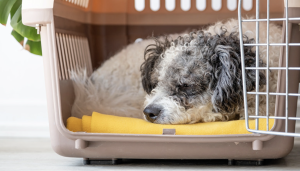Hydrotherapy has become synonymous with ‘swimming’ but your dog engaging with a controlled aquatic environment is far more than that. With the right therapist, and the right equipment, Hydrotherapy should be considered controlled physiotherapeutic exercise.
There’s a complex array of things going on in a hydrotherapy pool that you’re probably not aware is even happening. What is critical is that you understand results are never instantaneous. We are working with the body, which takes time to develop and progress through treatment; it is not like being able to inflate a balloon and seeing the instant result. We are building on the musculoskeletal system, as well as the nervous system which takes time and repetition to achieve the required results.
But here’s a little insight into what rehabilitative treatment looks like from a Hydrotherapist’s perspective.
The Centre
You’ll notice that when your dog enters the centre a warm and friendly greeting is top of our agenda – often laden with treats. This is because right from the very outset we need your dog to trust in the environment and our therapist to get the most out of the sessions. A relaxed dog will benefit to a much greater extent than a tense dog where muscles are contracted and elasticity lost.
The Shower Experience
We always start our hydrotherapy sessions with a shower. There’s a minor and major reason for this:
- The minor reason is to remove any debris before getting in the pool
- The major reason is the therapeutic thermal properties of having a warm shower
Our hydrotherapists get to be hands on with your dog, they’ll gently be feeling over your animal for any lumps and bumps you might not have noticed but most importantly the warm water will be helping tight muscles loosen up and dilating the blood vessels which helps ensure Oxygen supply in the body.
Standing in the pool
Your dog won’t swim for 30 minutes constantly, even our most athletic dogs can’t hack that. So they’ll rest regularly on our pods. During that rest we’ll be monitoring their heart and breathing rates to ensure their wellbeing but more than ‘rest’ is happening.
Static aquatic therapy starts from the moment your dog gets in the pool
The water temperature plays a critical role in the aquatic properties affecting your dog. The water itself, when heated to between 28 and 32 degrees celcius, is providing thermal therapy. Just like the pre-session shower. The heat helps the muscles to relax and the blood vessels on the surface of the animal increasing the oxygen in the blood supply and therefore healing.
The buoyant properties of the water also has an immediate effect even if the dog is not submerged fully in the water. A dog with water up to it’s hips is only carrying 35% of its weight on its limbs and the forces are making micro adjustments to your dogs joints by separating and stretching the compression between the bones out.
The pressure of the water on your dogs body is like being wrapped in a big comfort blanket. The blanket, which fills every crack and crevice, helps make the body feel more comfortable by reducing inflammation by pushing swelling away from the affected area and improving the lymphatic drainage.
The flow of the fresh warm water coming back into the pool from our heater is targeted at the pod creating water movement around any animal stood there. This is causing your dog to have to make minor posture adjustments by activating and deactivating muscles on a minute but effective scale. This impacts not only the major ‘power’ muscles but the smaller ‘postural’ muscles.
To get good movement your animal needs good posture so just by your dog standing in our hydrotherapy pool rehabilitative action is already starting to happen.
Movement in the pool
Movement doesn’t have to mean swimming. The motion of swimming is just one of the types of movement we can encourage in the pool.
As well as posture we want to target function and movement of the muscles because with function and movement comes stability and with stability comes pain relief. Ultimately your therapist is not looking to help your dog just move, but move in the right way. We call this ‘natural balance’.
When we are asking the dog to move in the pool, whether that’s walking up and down our under water pods or swimming in the water we are stimulating the sensory system. The pressure of the water, the resistance and forces of the water, and the tension across the surface of the water all play a part in ensuring this sensory system is constantly under input.
Each time we ask the dog to move, we are activating the receptors across the dogs body surface and improving neuromuscular stimulation which helps dogs to understand where their legs are in relation to their body. We call this proprioception.
Dogs move through a combination of proprioception and muscle power so by turning on both the muscles and the sensory stimulation we are helping the dogs rehabilitative journey through hydro-therapeutic activities.
We all know from visiting the seaside that water is harder to walk through than walking on land – infact science has proven that movement in water is 799 times slower than water with the same level of force. It’s this resistance that make the muscles have to work hard through the forces they have to apply to generate movement. They also have to work hard to break the surface tension of the water, so each time a dog removes and re-enters its leg from the water it’s having to work extra hard to break that surface tension.
Still think it’s just swimming? We’ve not even touched on the cardiovascular exercise benefits or the specific targeting of activities to rehabilitate different injuries and conditions yet and all this miraculous treatment is already happening.













